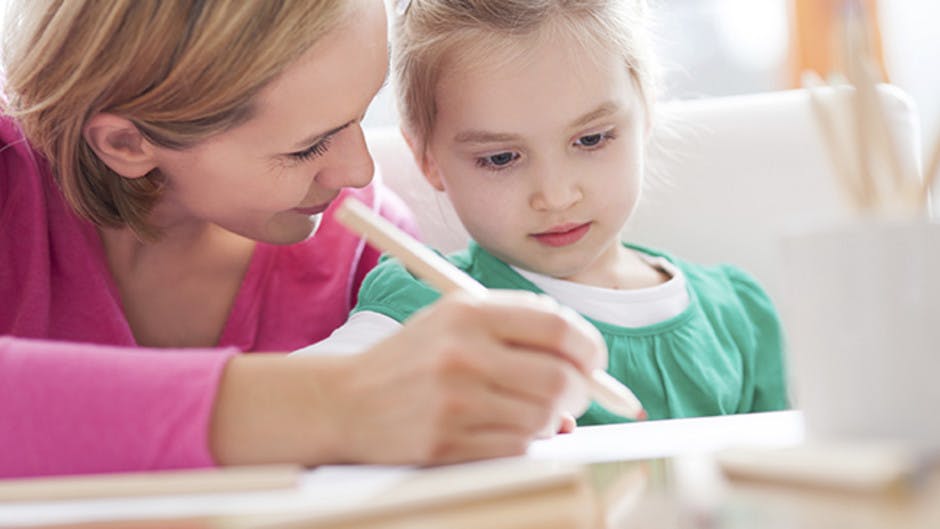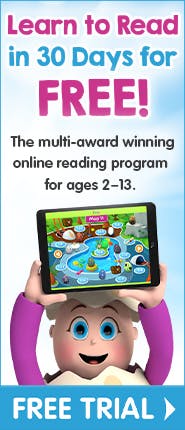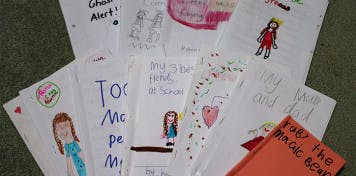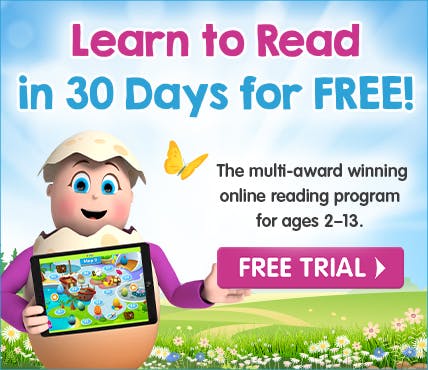


A Step‑by‑Step Guide to Helping Your Child Write a Story

Story writing helps kids learn to put their thoughts into order and use written language to communicate their ideas. Your child can enjoy the fun online story writing factory and create their own story books in Reading Eggs. Free trial
Taking those first steps towards writing a story can be both a fun and challenging activity for your child. By planning and writing a story, children learn to put their thoughts in order and use written language to communicate their ideas in a variety of ways.
Finding ideas and inspiration for writing a story can be tricky for both children and adults alike. Helping your child structure their story from beginning to end is a great way to make the writing process a whole lot easier.
Step 1: Think of an idea
A good place to start is by reading a book together. Stop and ask your child to make predictions about how the story might end. Your child's alternative ending may become great material for a new and original story. You can also write stories based on real‑life experiences, such as your child's first day of school, an adventure in the park or losing their first tooth.
Step 2: Create a character and a setting
Ask your child to create a character and a setting. Will their main character be a child, an adult or an animal? Will the story be set in the local park, a different country or outer space? Let your child's imagination run wild!
Step 3: The Beginning
All good children's stories have a beginning, middle and an end. Ask your child to expand on their original story idea and set the opening scene. What's special or different about their main character? Maybe it's a cat who enjoys taking baths, a superhero who can't fly or a princess who lives in a cave!
Step 4: The Conflict
A story with no conflict can be rather dull. Help your child understand the concept of conflict in a story by revisiting some of their favourite books. Explain to them when a conflict arises and encourage them to create one for their own story. They can even introduce a new character to shake things up!
Step 5: The Turning Point
The turning point is usually in the middle of the story and helps to make a story more interesting. It can be a eureka moment, a time where a character discovers a hidden superpower or a surprise that throws the whole story into a spin. Ask your child to think of something that the reader would least expect. It doesn't always have to make sense – this is your child's time to unleash their imagination!
Step 6: The Resolution
A good story doesn't finish without a final resolution. Ask your child how the conflict in their story pans out. Challenge them to link the conflict with the turning point to create a meaningful resolution.
Step 7: The End
A satisfying ending is the perfect way to finish a story. What happened to the characters once their conflict became resolved? Were they able to finally achieve something, or did they learn an important lesson as a result?
Let your child write their own stories online!
Reading Eggs includes hundreds of self‑paced reading lessons, fun games and multiple learning areas, including the Story Factory. Your child will love the step‑by‑step guide to writing their own story books, as well as the weekly story writing competition.
For more tips and ideas, check out our other articles:
Homemade Story Books are a great way to nurture their creativity and you'll end up with a wonderful keepsake to treasure. Encouraging your child to make their own books has many educational and emotional benefits.






